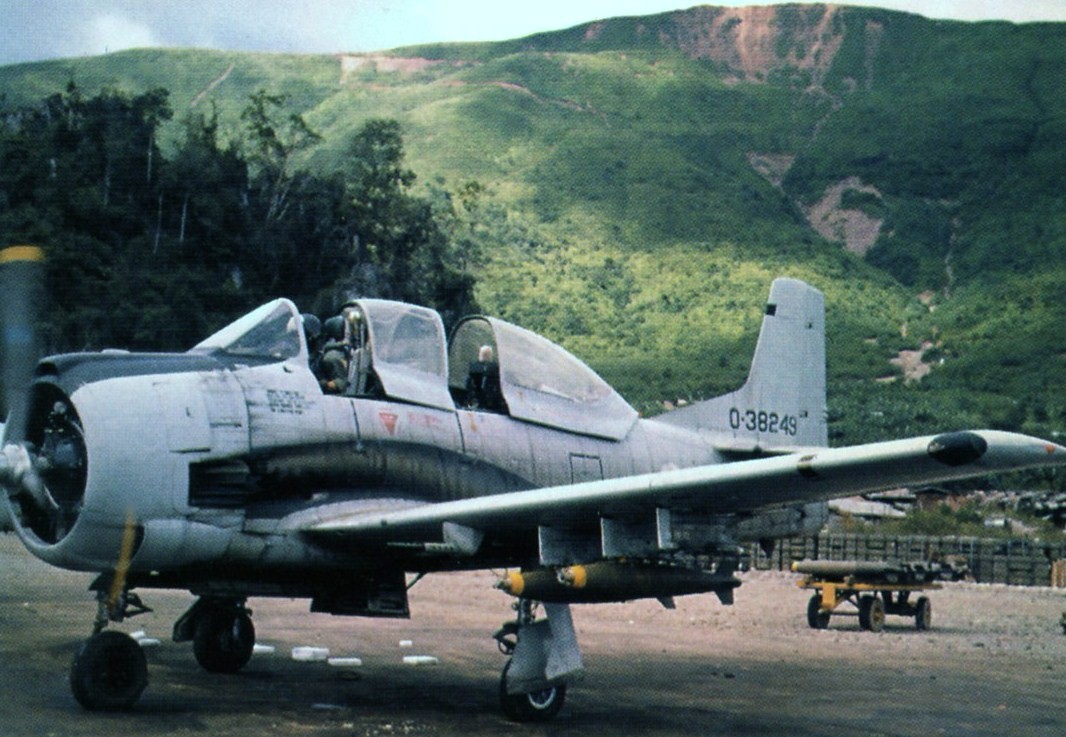the covert air war
In his book “Voices from the Plain of Jars: Life Under and Air War”, Fred Branfman, who lived in Laos in the late 1960’s, documented stories from villagers that escaped the Plain of Jars, a significant historical site dating back to the Iron Age. He claimed he interviewed over 1,000 Plain of Jars refugees.
America began its covert operation in northeastern Laos in May 1964. The bombing, called “Operation Barrel Roll,” escalated year by year and by 1968, dive bombers littered the country with ordinances daily.
Bombing started off light, according to Branfman, and away from populated areas. But by 1968, he wrote, the “intensity of the bombings was such that no organized life was possible in the villages.”
The operation was supposed drive out communist forces and keep them from supplies by bombarding the Ho Chi Minh Trail and other routes. Eventually, warplanes flew over villages and bombed civilians.
Villagers were forced to hide in nearby forests and dig holes for shelter against the planes. Pilots shot and bombed farmers and children going about their day, while the Pathet Lao, the real targets, remained hidden.
The U.S.’s major goal, Branfman wrote, was to hurt the Pathet Lao by “depriving them of local food supplies, disrupting transport and communications, killing off potential recruits and rice porters [and demoralize] the civilian population.” Villages were destroyed and rice fields were made useless by the air war.
Branfman noted, in his book, the stark differences between the villagers and the might of the U.S. military.
“[G]uerilla zones in Laos were composed of three to four thousand tiny villages,” he wrote. “They enjoyed neither running water nor electricity. Most villagers were subsistence-level farmers who had to grow or catch the food they ate in order to survive. … And every day for nine years, hundreds of millions of dollars of the world’s most sophisticated aircraft were hovering over these poverty-stricken villages.”
Branfman interviewed pilots stationed in Da Nang in South Vietnam in 1970 and said he was struck by the “banality of evil” with most of the pilots. One pilot spoke “proudly” about new napalm canisters with better dispersal patterns, but Branfman wrote that he could only think about a mother of a 3-year-old girl who died from napalm burns to her breasts, stomach and vagina.
The air war wasn’t revealed to the American public until 1969 when Congressional hearings about the conflict were made public.
Plain of Jars villagers returned to their home only to continue suffering from unexploded ordinances that litter their homeland. Thousands of farmers and children have either died or been maimed by unexploded bombs, which continue to claim victims today.
The U.S. cleaned up only 0.28 percent of an estimated 80 million unexploded cluster bombs, according to Branfman. President Barack Obama in September 2016 pledge $90 million to help rid Laos of the ordinances dropped over 50 years ago. However, he didn’t offer an apology for the air war, The Atlantic reported, and instead said, “Whatever the cause, whatever our intentions, war inflicts a terrible toll.”
Along with the air war, the CIA conducted its own “secret war” by training locals in covert operations against the Pathet Lao. The agency sent local agents to sabotage outposts and assassinate officers.
The U.S. government understood that the war wasn’t going well, as the Pentagon Papers revealed. In 1973, the U.S. signed an agreement with south and north Vietnam for an immediate cease-fire and to withdraw all American personnel.
Meanwhile, one more attempt at a coalition government in Laos was underway. The Pathet Lao were at a significant advantage by this time. With the U.S.’s cease-fire, the communist regime’s victory was inevitable.
April 17, 1975 marked a turning point for the Pathet Lao. The Khmer Rouge overtook Cambodia, and two weeks later Saigon fell to north Vietnamese forces. Pathet Lao officials jumped on the momentum and began a propaganda campaign over Radio Pathet Lao, the regime’s media arm. A newly formed group called Twenty-One Organizations for Peace organized May Day protests in Vientiane comprised of students, professors and workers condemning the Royal Lao Government and the political right for corruption.
The Pathet Lao, also known by this time as the Lao People’s Revolutionary Party, “peacefully liberated” almost every southern town by the end of May, according to Stuart-Fox. The communist regime went into Luang Prabang in early June.
Pathet Lao victory was assured. Officials held rallies and gave speeches in Luang Prabang. They used flair and props to symbolize the death of U.S. imperialism and the takeover of Vientiane. New rules intended to wash away “pernicious western influences” were implemented in Vientiane, according to Stuart-Fox.
“Women were no longer permitted to wear jeans, or youths to grow their hair long,” he wrote. “Controls were introduced over personal movement, and the press censored.”
The Pathet Lao organized rallies in late November at the national stadium in Vientiane demanding a "new popular and democratic regime" and denouncing the monarchy and Royal Lao Government. With such pressure, the King resigned, officially handing over the kingdom to the communist regime on Dec. 2, 1975.

